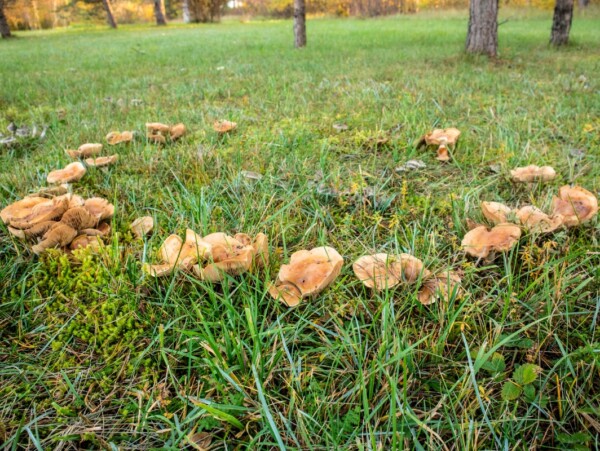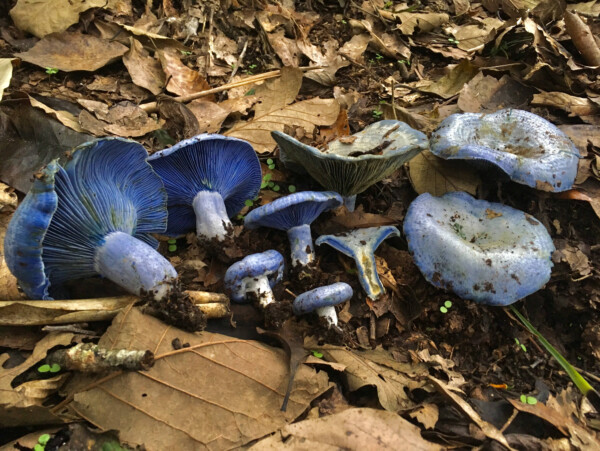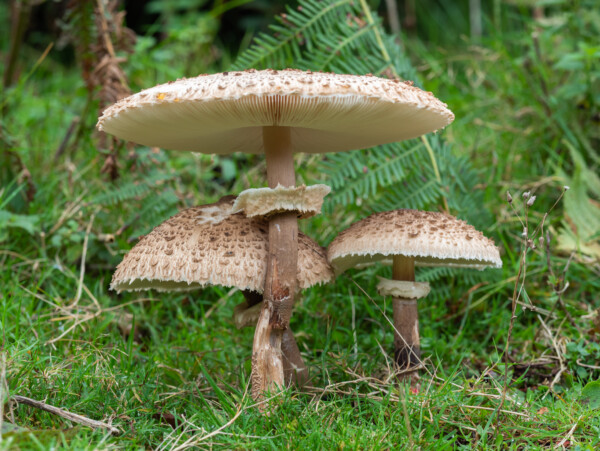Affiliate disclosure: This post may contain affiliate links. Please see our Privacy Policy.
Cauliflower mushrooms are a delicious wild edible mushroom that’s easy to identify but elusive nonetheless.
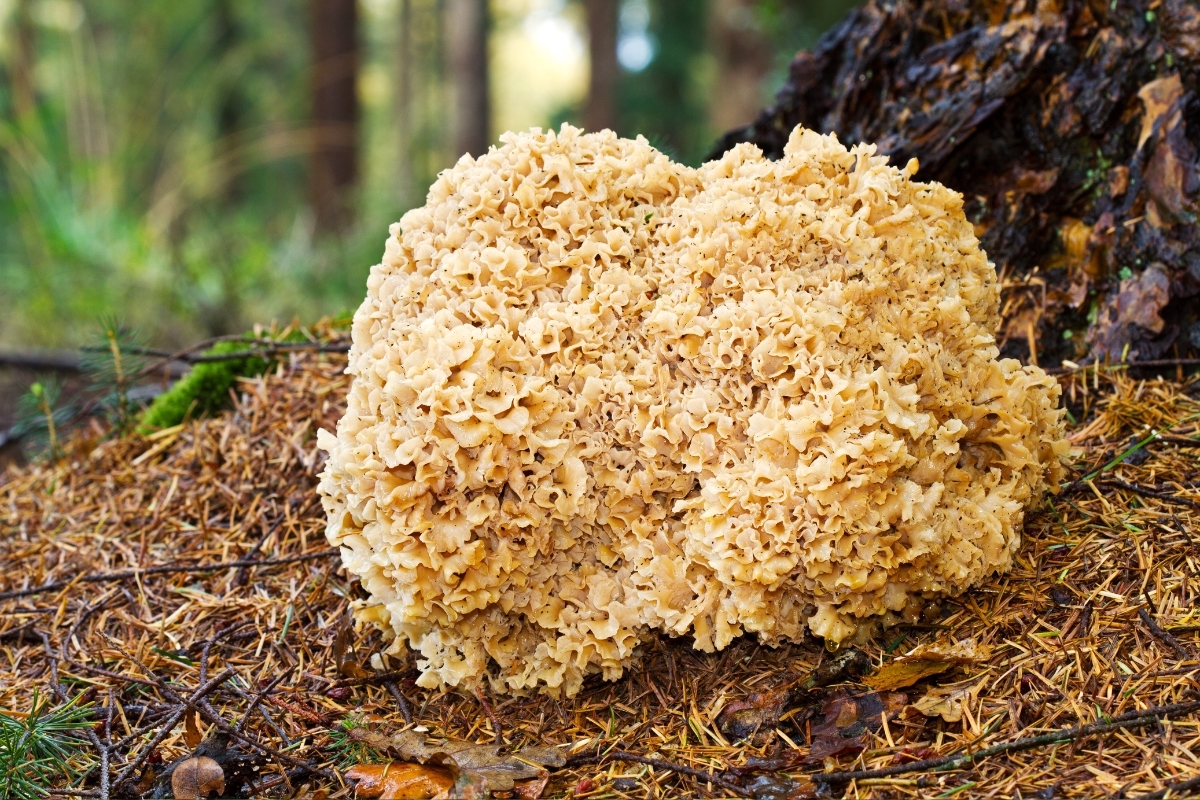
This article was written by Timo Mendez, a freelance writer and amateur mycologist who has foraged wild mushrooms all over the world.
One of the best things about foraging mushrooms is that there is almost no limit to the diversity of edible species you can find. It is only once you step out of the comfort zone of store-bought mushrooms that you begin to understand how expansive and vast this group of foods is.
For example, in China, over 900 species of edible mushrooms are consumed as food (Zhang, 2021). In Mexico, this number is over 200 (Perez-Moreno, 2008), while in Spain it is over 60, most of which are marketed commercially (Roman, 2003).
Meanwhile, the average grocery store in the USA, Canada, and much of Western Europe, might only have 2 or 3 species for sale, and oftentimes just the classic button mushroom. Imagine if our understanding of “fruits” were limited to a few species, like apples, pears, and occasionally oranges. The concept of fruits would be a limited and monotonous concept void of the vibrant colors and flavors found in fruits like mango, papaya, plums, cherries, etc.
To be fair, if you look for them, there is a growing diversity of mushrooms in specialty organic shops and farmer’s markets. Several species of wild mushrooms might be sold at a local co-op and innovative mushroom growers are providing species like Oysters and Lion’s Mane on a more regular basis. This being said, there are some mushrooms so rare and exotic, that it is unlikely you will ever find them in the grocery store.
These can only be found in the wild, and are so exclusive they are rarely, if ever, commercialized.
One of these, and a personal favorite of mine, is the elegant and evasive Cauliflower Mushroom. Even for the most experienced mushroom hunters, these are prized treasures seldom found but a couple of times a year.

The Delicious Cauliflower Mushroom
The Cauliflower Mushroom (Sparassis sp.) is named after this cruciferous vegetable not because of its taste, but due to its physical resemblance. While this comparison has been made for over a century (Britten, 1877), it’s clear these early taxonomists were never exposed to the magnificent forms of a coral reef. Indeed, a closer inspection doesn’t reveal the shape of a cauliflower, but a large hemispherical “brain coral” that can easily grow larger than your head!
The common name “Noodle Mushroom” pays homage to its unique culinary attributes. When harvested in its prime, this mushroom has the texture of “al-dente” pasta noodles. Its flavor is delicate and subtle, with fungal aromas reminiscent of other wild mushrooms. While it can be enjoyed with classic “garlic and onion” saute, it is also excellent in a wide variety of Asian-inspired stir-fries and soups.
For arborists and foresters, the Cauliflower Mushroom is considered a pathogen. It consumes and degrades the woody tissues at the base of trees, interfering with tree health and rendering it vulnerable to collapse. While it generally causes rot in the roots, it can spread its mycelium several yards up into the tree trunks. This being said it is generally considered a “weak parasite” as it can coexist with its host for a long while.
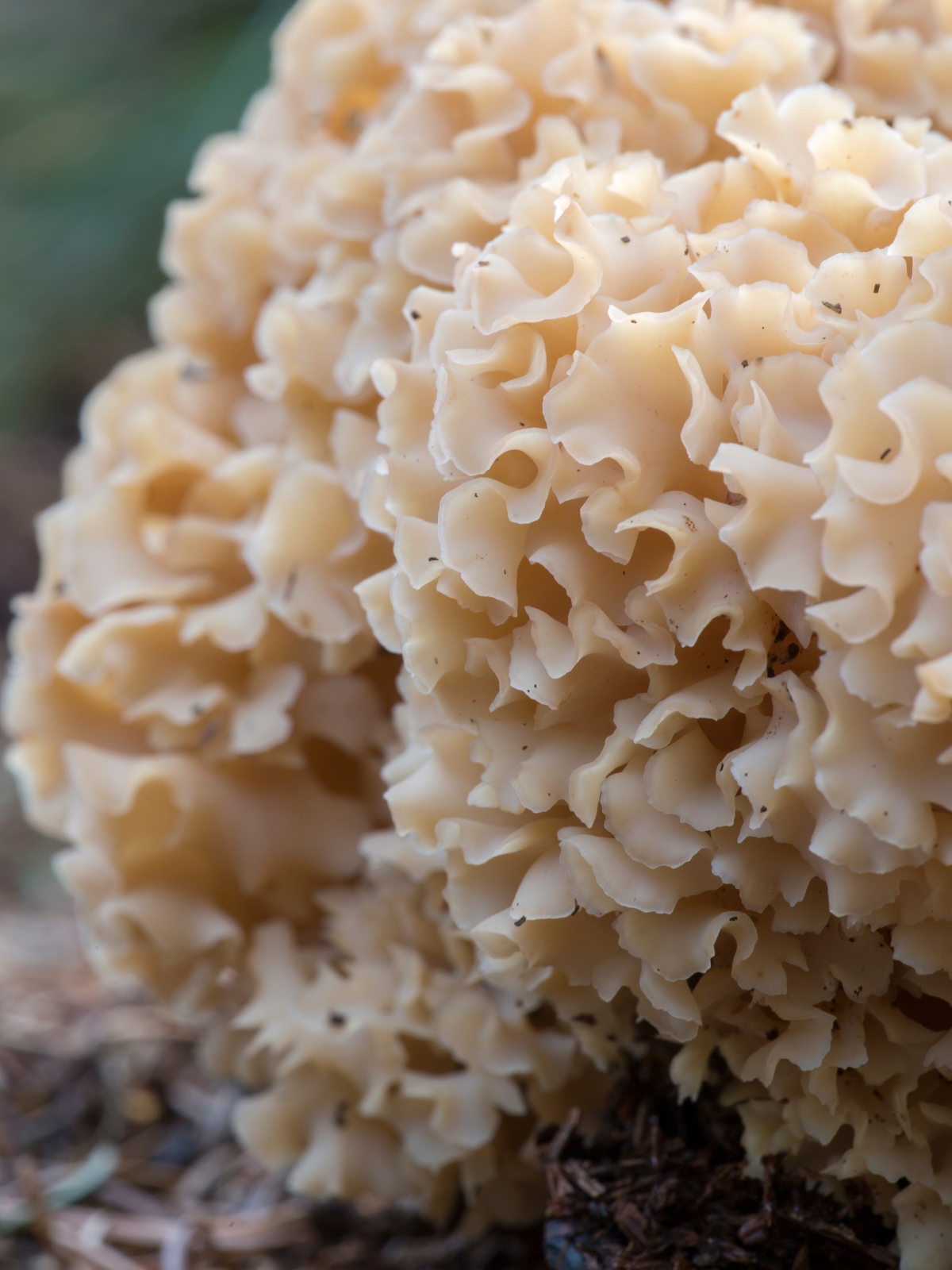
Medicinal Properties of the Cauliflower Mushroom
While most mushroom enthusiasts simply enjoy the Cauliflower mushroom as a choice edible, in Asia, it is valued for its medicinal properties. It is remarkably high in beta-glucans, some of the most important compounds in medicinal mushrooms.
One study found that Cauliflower mushrooms contained more than 40% beta-glucans by dry weight (Kwon, 2009)! This is several times more than that found in many of the other popular medicinal species.
While there are many promising studies regarding the medicinal potential, comprehensive clinical trials are still pending.
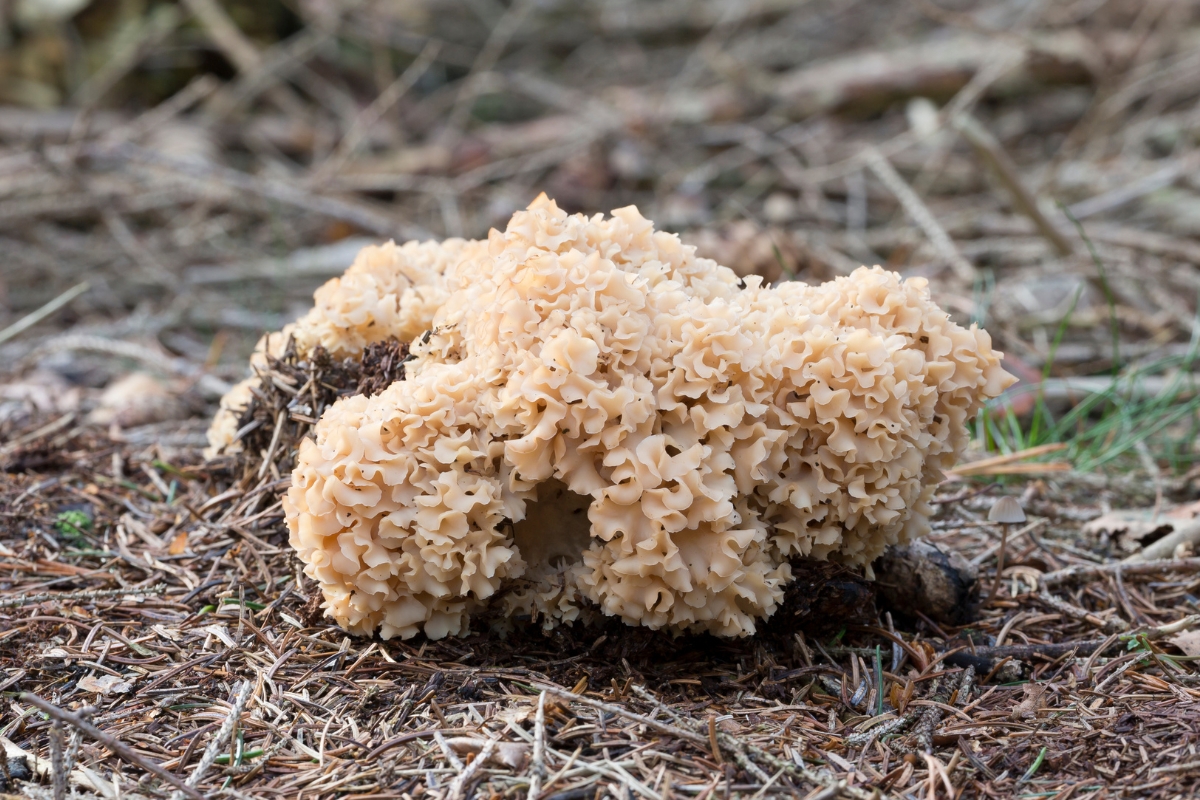
Potential Health Benefits Of Cauliflower Mushrooms
- Anti-Tumor (Ohno, 200; Yamamoto, 2007)
- Immune Boosting (Hasegawa, 2004; Kim, 2010; Hasegawa, 2004)
- Anti-Inflammatory (Yao, 2008; Kim, 2012; Wang, 2019)
- Anti-Diabetes (Kwon, 2009; Yamamoto 2010)
- Brain Health (Zhang, 2023; Zhang 2022)
- Weight Loss (Lee, 2014; Takeyama, 2018)
- Heart Health (Hong, 2015)
- Skin Health (Kimura, 2013)
- High Antioxidant Activity (Lee, 2016; Joshi, 2014)
Foraging For The Cauliflower Mushroom
Cauliflower mushrooms are not something you forage for on a regular basis. No, they are rather unusual gems that even the most avid mushroom hunters only stumble upon a couple of times a year. It’s not like chanterelles or boletes, which are rather ubiquitous compared to these elusive marvels.
Yet, for those who do regularly wander through the forests looking for mushrooms, chances are that you will eventually be blessed by one when you least expect it. This is usually followed by an explosion of excitement and adrenaline, knowing that you found such a rare and exquisite mushroom. It’s a type of mushroom that instantly makes your day.
Despite being rare, there is some good news regarding your ability to find them. To begin, they have a pretty vast distribution and occur in many coniferous and sometimes mixed-hardwood forests. We’ll go into details of this later. The second good piece of news is that once you find a spot, you can come back to it. They don’t always fruit every year, but they will regularly appear in the same area, sometimes just inches away from where you found them previously. Even if you find a half-rotten specimen, you now know to check this spot the following year a bit earlier in the season.
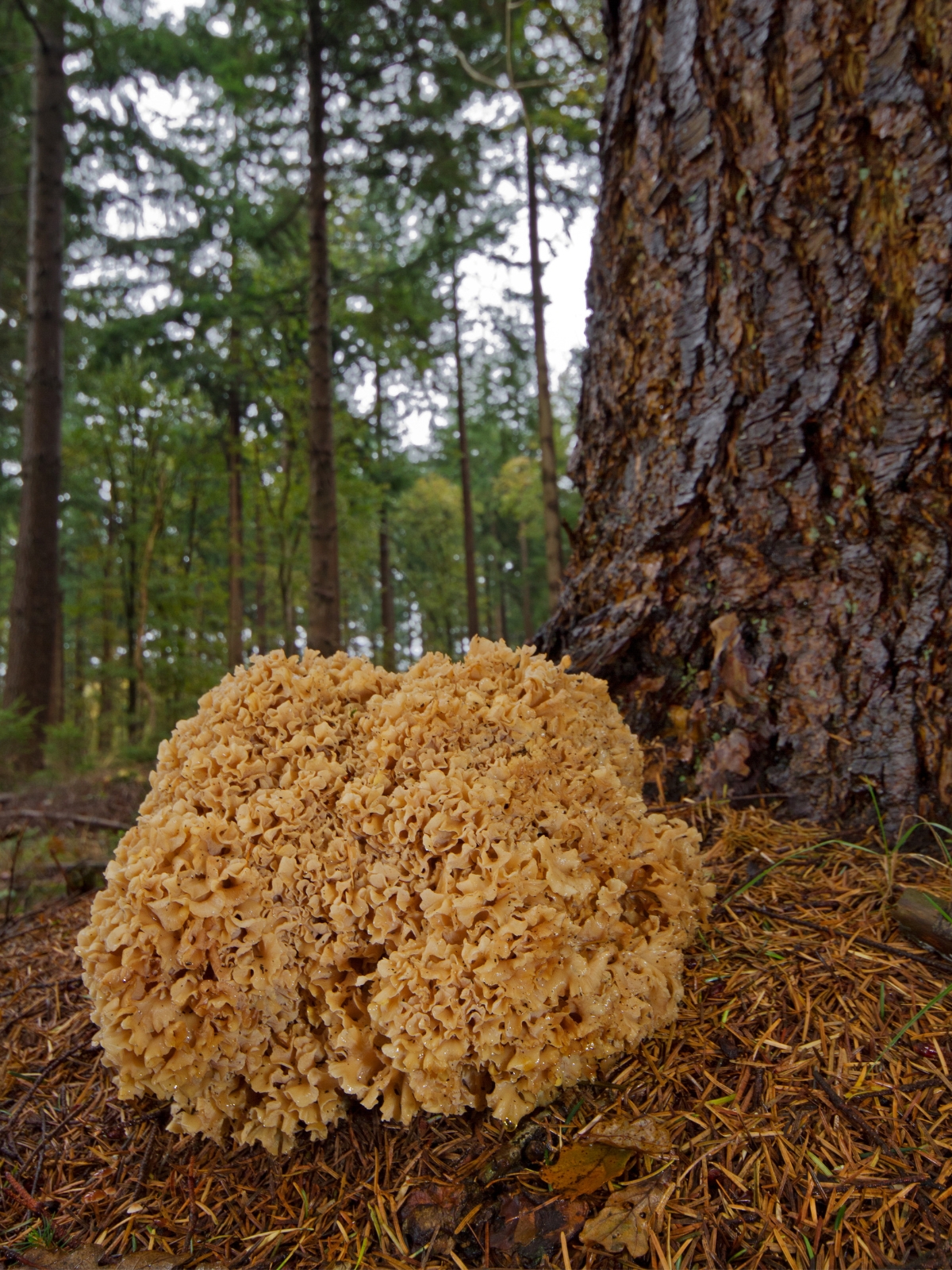
Species Of Cauliflower Mushrooms
Before moving forward, I’d like to clarify that there are several species of closely related Cauliflower Mushrooms. If you don’t like Latin names, you can go ahead and skip over to the next section.
Cauliflower mushrooms belong to the genus Sparassis and include a dozen or so species. There are three important species to know for the context of this article. These all look similar although they exist in distinct geographic locations.
European Cauliflower (Sparssis crispa)
This species is native to Europe and was the first species described of the bunch. Due to the striking resemblance between different species, this name was historically applied globally for most Cauliflower Mushrooms.
Although you find this name in many North American field guides, it is now known Sparassis crispa doesn’t truly occur in North America (Hughes, 2014)!
American Cauliflower (Sparassis Americana)
This is the species you find in the eastern United States. There is also a variety of this species that occurs in the southwestern United States.
It looks very similar to the European cauliflower mushroom.
Western Cauliflower (Sparassis radicata)
This species is found in the western United States, most notably in the Pacific Northwest.
It is distinct from other species due to its large tap root.
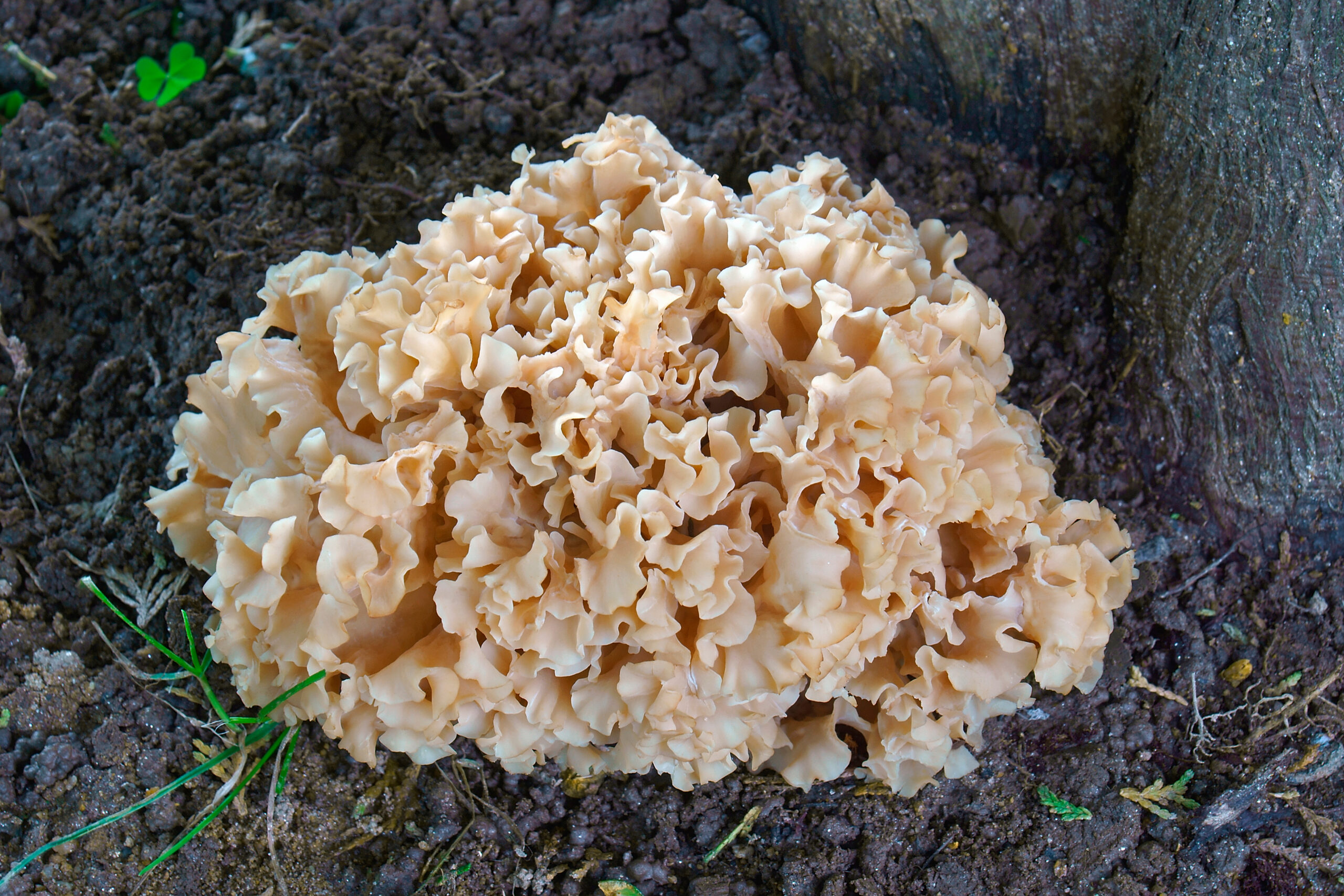
Additionally, there are two other closely related species of interest, The Eastern Cauliflower (Sparassis spathulata) and the Broad Leaved Cauliflower (Sparassis brevipes).
These are also edible but of less culinary interest. Lastly, across the world, there are more than a dozen different species that have been described.
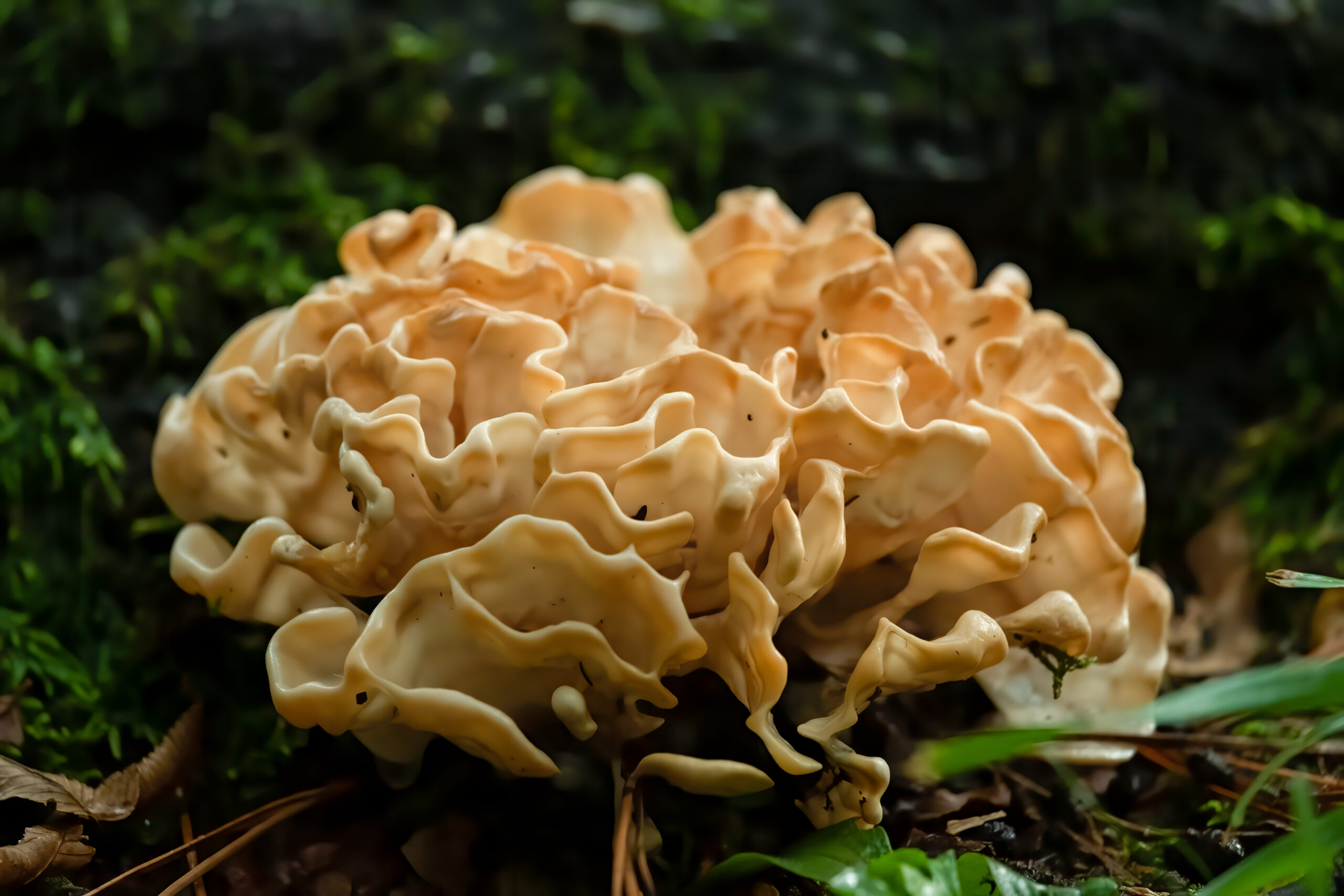
Identifying the Cauliflower Mushroom
Identifying the three species of Cauliflower Mushroom discussed above is rather easy, even for inexperienced foragers. It is a strange one, so mistaking it for another mushroom is rather difficult unless the forager is truly being a bit negligent. This being said, don’t be negligent! If you have any doubt, have it identified by a professional or throw it out!
As discussed at the beginning of the text, the Cauliflower Mushroom only vaguely resembles a cauliflower. It looks like certain forms of coral, with a complex interlaced structure with many wavy ridges. This being said, it does not look like the species commonly referred to as “Coral Mushrooms” (Ramaria sp. and Clavaria sp.). The mycologist Michael Kuo from Mushroom Expert tagged the rather humorous but accurate comparison of tightly packed noodles, ranging from egg noodles to dumplings, depending on the species.
When young, these mushrooms are more light in color, tightly packed, and have a tough consistency. They are generally spherical although they can have a sort of clumped shape, like some sort of strange brain. They are composed of many layered and intricate wavy “petals” that form an intricate folded structure. As they age, the mushrooms expand into a large frilly mass. The texture becomes softer and the spaces between all of the curly petals begin to expand. Once mature, some specimens easily grow to be several feet across and weigh dozens of pounds! As they go past their peak of maturity the mushrooms begin to darken in color becoming tan and then light brown.
If you delicately pluck the mushroom you will notice it has a central tap root from which it develops. The western Cauliflower (Sparassis radicata) has a particularly large tap root which I’ve heard can even be several feet in depth, although I’ve never bothered digging for it.
Lastly, check your surroundings. These mushrooms almost always grow directly at the base of a coniferous tree and are often solitary. If you’re not in a coniferous forest you may have one of the other species of Sparassis or a completely different mushroom altogether.
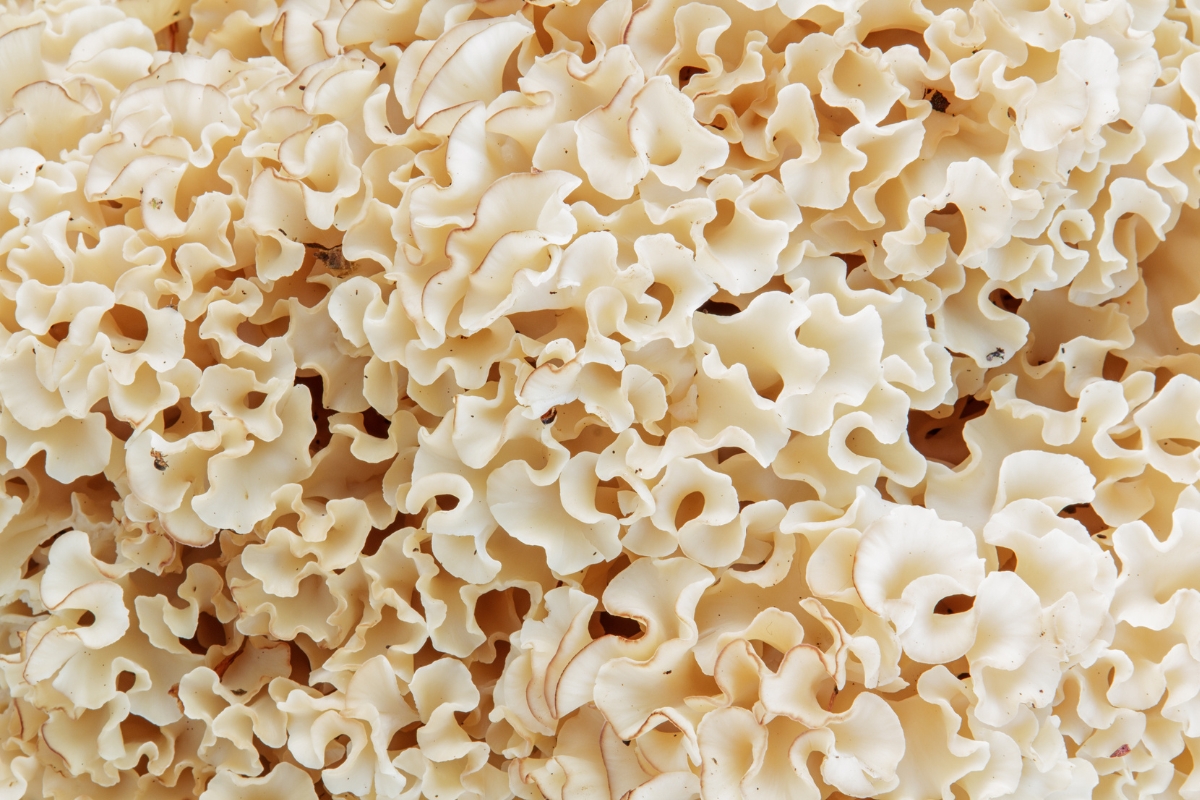
Identification Features Of Cauliflower Mushrooms
- Resembles coral or tightly packed noodles
- Complex interlaced structure with wavy ridges
- Young mushrooms: light in color, spherical or clumped, tough consistency
- Mature mushrooms: large frilly mass, soft texture, expand between petals
- Can grow to several feet across and weigh dozens of pounds
- Has a central tap root from which it grows.
The species Sparassis spathulata and Sparassis brevipes look pretty similar although they have a more compact look with upright ridges. They are not as frilly or frizzed as the other Cauliflower mushrooms and they are almost always found with hardwoods.
Where To Find Cauliflower Mushrooms
Considering that Cauliflower Mushrooms are few and far between, I rarely recommend you go out and solely look for this mushroom. In most cases, you won’t come home successful if you set out with the mission to find a new Cauliflower spot.
Thankfully, Cauliflower mushrooms fruit during a time of the year when other species such as Chanterelles, Boletes, Black Trumpets, and other choice edibles abound. This is why most foragers find their Cauliflower spots by happenstance when they are out looking for other more common morsels.
This being said, under the circumstance that you already have a known spot, you very well can go out on a mission to find this mushroom. A friend of mine always rejoices on his experience finding a Cauliflower Mushroom for the first time using GPS coordinates given to him by an old friend who was away for the season.
While the tree hosts vary depending on your geographic location, there are some things to keep in mind no matter where you are seeking this mushroom.
- Cauliflower Mushrooms always grow near the base of trees. They are often found with large, old, and mature trees. It’s not uncommon to see them in old growth.
- It is not uncommon to find Cauliflower Mushrooms on the edge of forests or right on the side of roads/trails. In China, it is known as a “Sunshine Mushroom” as studies suggest it requires ample light to grow (Yang, 2017).
- While you most often find Cauliflower near living trees, it is also found near the stumps of deceased trees.
- Keep your eye out for a white to pale yellow growth. Cauliflower mushrooms can be ginormous, so it is not uncommon to see them from afar. They have a pale-brown color in maturity.
Note On Tree Hosts: It is pretty evident that Cauliflower mushrooms are adaptable to infecting different types of tree hosts. While the three species of most interest are almost exclusively associated with conifers, they infect a wide variety of species. Below we discuss the species you most find them associated with, although they are not limited to these.
Eastern North America
In the eastern United States you find the American Cauliflower, Sparassis americana, at the base of mature pines. Some hosts include Eastern White Pine (Pinus strobus), Loblolly Pine (Pinus taeda), Red Pine (Pinus resinosa), and Longleaf Pine (Pinus palustris).
It is commonly found from Alabama up to New Hampshire, mostly along the Appalachian Mountains. It is present but rare in the Midwest, around the Great Lakes region, the southern seashore, and eastern Canada. It is absent from the deep south and close to the Gulf.
While generally not considered as good, you can also find the Eastern Cauliflower (Sparassis spathulata) which does grow at the base of hardwoods. This species has a much greater distribution and is found as far west as eastern Texas, Arkansas, and Missouri. It can also be found near the gulf, near the eastern shoreline, and north up into New Hampshire and northern Ohio.
California and the Pacific Northwest
In California and the Pacific Northwest you can find the Western Cauliflower along the base of conifers. Its southern range starts in Monterey and stretches up along the coast until Oregon. In Oregon, the distribution extends east into the Cascades and continues up through western Washington into British Columbia. Cauliflower mushrooms have also been found in the Sierra Nevadas, the Canadian Rockies, and even in southern California near San Luis Obispo.
In the southern portion of its range, it is found along with Bishop Pine (Pinus muricata) and Monterey Pine (Pinus radiata), while in the north you find it with Douglas Fir (Pseudotsuga menziesii) and Sitka Spruce (Picea sitchensis).
Southwestern United States
In the mountains of Arizona and New Mexico it is possible to find a unique variety of the American Cauliflower known as Sparassis americana f. arizonica. This variety is closely related to the American Cauliflower found in eastern North America, although it has a distinct pinkish hue. It occurs in the sky-island coniferous forests largely associated with Ponderosa Pine (Pinus ponderosus) but also Douglas Fir (Pseudotsuga menziesii) and White Fir (Abies concolor).
Europe
The species Sparassis crispa is well distributed in Europe, and particularly abundant in the continental climates of northern Europe. Here it associates with several different coniferous tree species although most notably it occurs with Pine and Larch. You can also find Sparassis brevipes, which is considered less choice (relative to Sparassis spathulata) alongside Beech and other hardwoods.
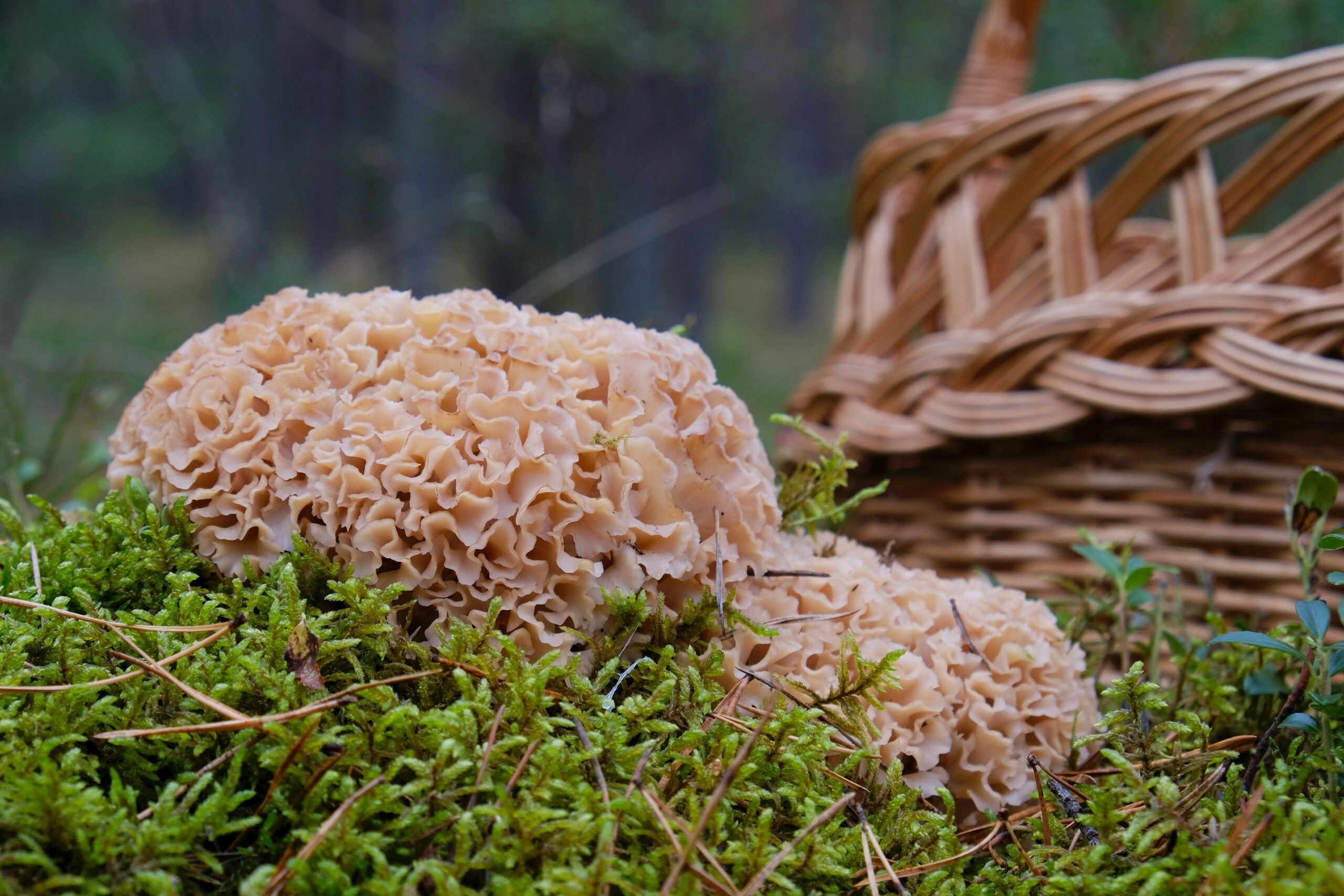
When To Forage Cauliflower Mushrooms
Generally speaking, Cauliflower Mushrooms grow during the peak of mushroom. They typically only fruit once in a season and begin growing as soon as there is good consistent rainfall. Cold temperatures and frost render the mushrooms inedible and bring an end to the season.
California and The Pacific Northwest (September to November)
In the western United States, Cauliflower season is from September to November, with a peak around October. In moist coastal regions, it is not unheard of for people to find them as early as August and even as late as January thanks to the mild climate.
Eastern United States (July to October)
Here the season usually starts with summer rain, peaks in about September, and lasts until temperatures cool down in October. In the southern Appalachians, it has a longer season that can last from June to November. As you go further north the season becomes shorter.
Southwestern United States (June to September)
Here the season is short-lived and fed by the summer monsoons. It typically starts around mid-June and ends in September.
Europe (August to November)
In Europe the season can vary greatly but generally lasts from late summer until late fall with a peak around September. In southern Europe, the season is more prolonged and occurs whenever the first rains arrive while in northern Europe the season tends to be more concise.
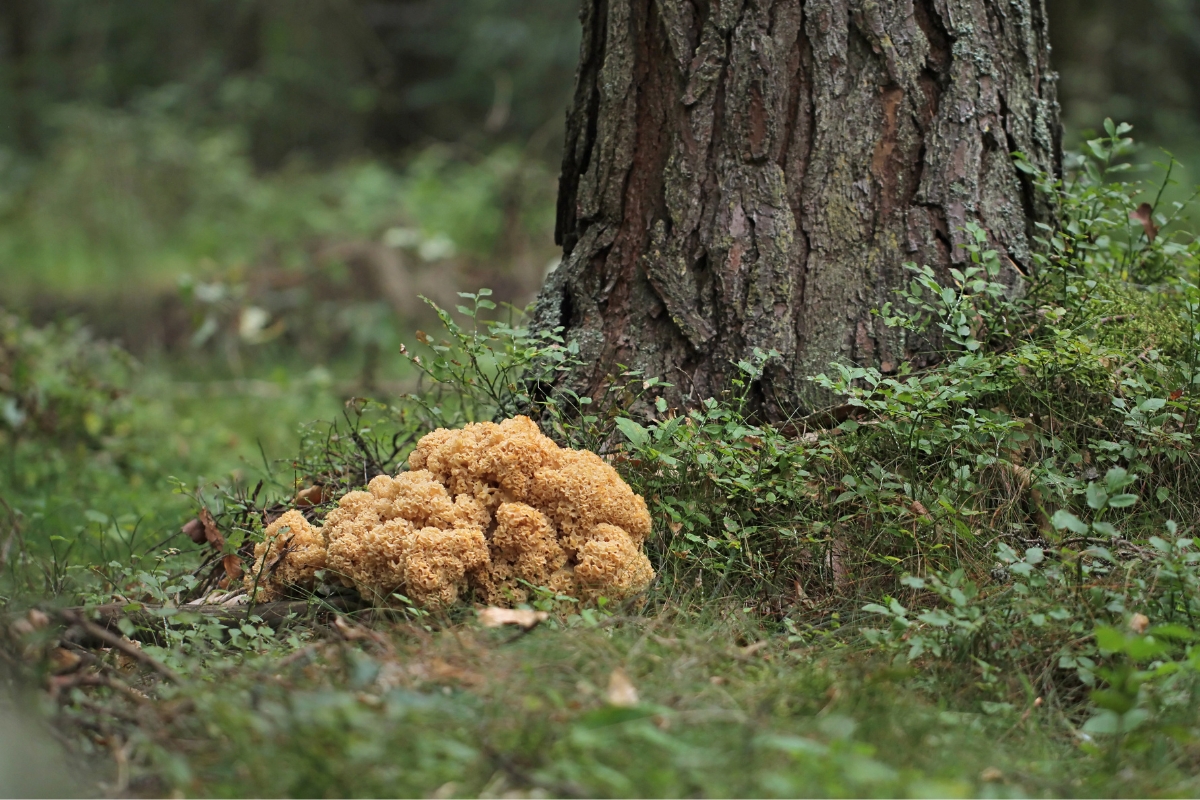
Cauliflower Mushroom Lookalikes
I would argue there are no true lookalikes, but hey, I have the bias of experience on my side. This said, certain species might confuse someone unfamiliar with this mushroom.
Hen Of The Woods (Grifola frondosa)
While this is an equally exciting edible mushroom, it does have some of the same features as the cauliflower mushrooms. It grows at the base of large trees and has a layered coral-like structure.
The main differences are that Hen of the Woods (Maitake) has a darker, gray color and thicker dense florets.
It also occurs under hardwoods as opposed to conifers.

Coral Mushrooms (Ramaria sp.)
These are quite different as they have many tall thin branches or antlers, and often occur in vibrant and unusual colors.
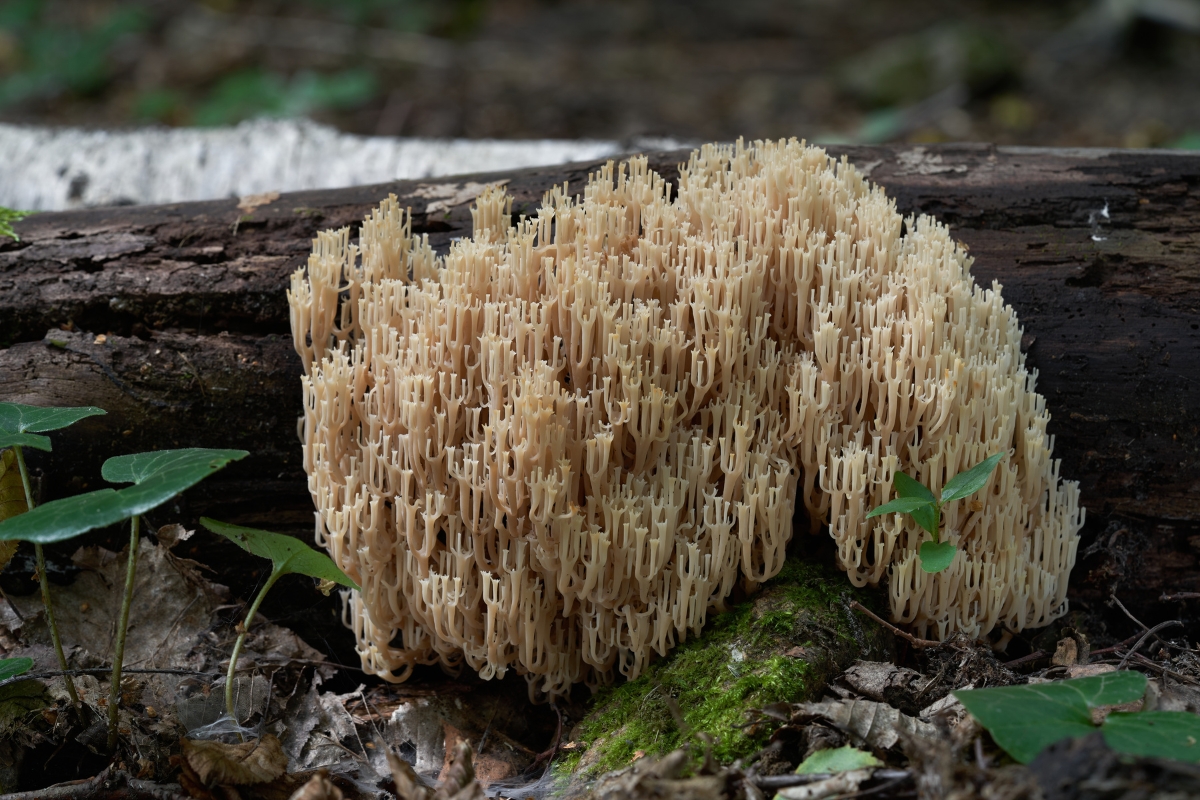
Snow Fungus (Tremella fuciformis)
This mushroom has a bit of a similar structure, although it is extremely gooey and gelatinous.
It grows directly from rotting wood and never from the ground.
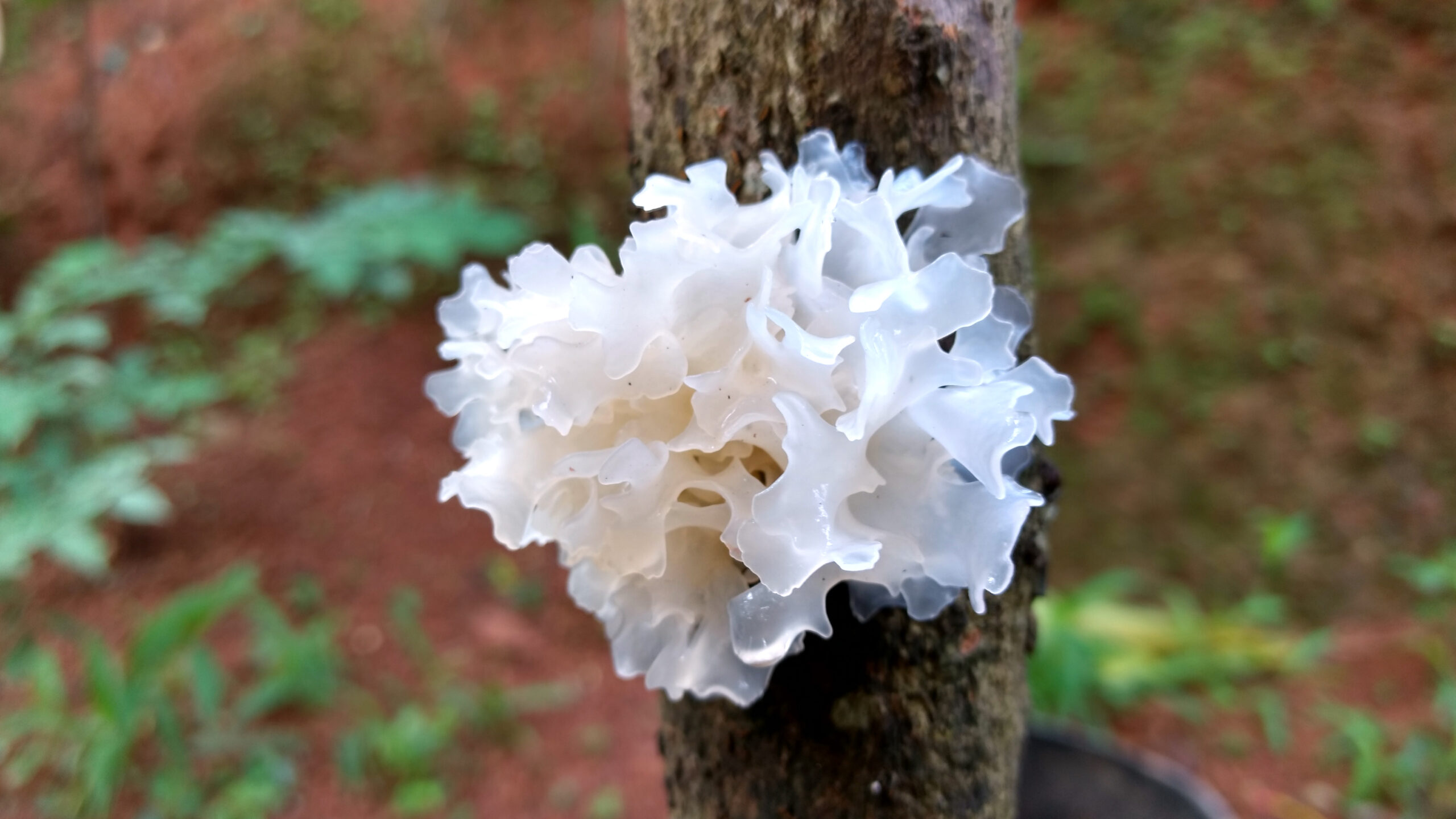
Podoscypha aculeata
This mushroom is pretty rare and occurs from South Carolina down to Brazil. It forms layered rosettes with a coarse and rugged surface. It has thin petals and a tough rubbery texture.
How To Harvest Cauliflower Mushrooms
Whenever harvesting anything from the wild, it is important to do so with the utmost respect. Don’t litter, cause erosion, or do any unnecessary harm to the ecosystem. Also, always pay respect to the people who use or enjoy the wilderness where you are harvesting. Tread lightly and promote ethical harvesting amongst anyone you bring along.
Once you find a Cauliflower Mushroom, first consider if it is in good condition for harvesting. If it’s too old, buggy, and becoming too dark in color, it is likely not a worthwhile harvest. When they are too young they also have a tougher texture which is less pleasant, so it may be worthwhile to leave it and come back for it later. Plus, if they’re very young they still have a chance to continue growing.
If it passes the quality check, you can now harvest what you need. Do not harvest more than you need and if you have doubts about whether you’re actually going to eat it, don’t bother harvesting. I have at least one friend whom I know loves to pick mushrooms but doesn’t feel the same about eating them. Thankfully, instead of letting them rot in the fridge (like he used to), he gives them to his mushroom-loving friends.
I’ve discussed the picking vs cutting scenario multiple times before, and as I’ve mentioned there is no evidence that cutting is preferable to picking. When I went out picking with French mycologists, they promote picking as they say it reduces risks of infection to the mycelium caused by leaving a damaged stem butt on the ground. This is contrary to the cutting which many American pickers promote. I’m going to let this up to you, although I recommend following whatever technique is most accepted in your region.
Once harvested, you can do a superficial cleaning but no need to deep-clean. These mushrooms are infamous for being hard to clean, so it’s best to do it once you get home.
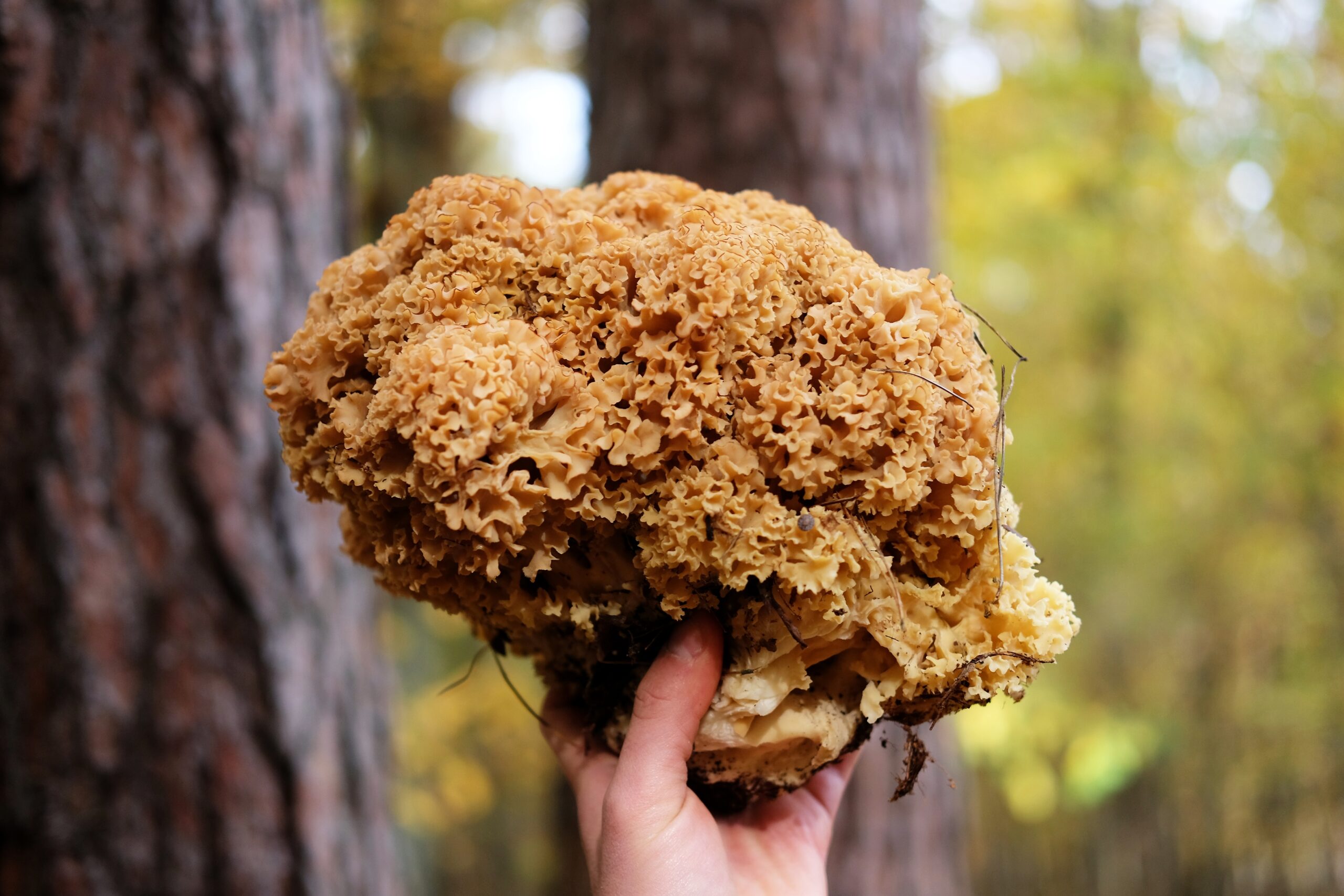
Using Cauliflower Mushrooms
You can store cauliflowers for a little while in the fridge, but it is most recommended to cook them as fresh as possible. Within a week of harvesting at most.
The first thing you’re going to want to do is clean your mushroom. Despite being taboo amongst some foragers, you’re going to have to clean this mushroom with water. There’s no way around it. It has too many intricate folds, nooks, and crannies that get full of dirt and forest duff.
For cleaning, I recommend starting with a preliminary rinse to wash off any easy-to-get dirt. Afterward rip it into pieces by hand, exposing all the surfaces found within the mushroom. Place this in a bowl of water and rinse it until you’ve gotten rid of all the muck. Some folks like to let it soak in salt water as this can help get any bugs out.
Other folks like to clean this mushroom by briefly boiling it or submerging it in boiling water. This makes the flesh more elastic and helps with the cleaning process. I recommend steaming the mushroom if you’re going with this route to preserve all the water-soluble nutritional benefits and flavors.
When it comes to cooking, the possibilities are endless. The flavor is mild and it is quite adaptable to many dishes. I recommend finding a recipe that lets the exquisite texture of this mushroom shine. Brothy soups are an excellent way and a personal favorite of mine. Think Ramen, Pho, or other Asian-style soup recipes. Simply shred it into pieces by hand and let it simmer with the broth for 5-10 minutes until tender.
Aside from this, they can also be good in Italian pasta dishes with cream or tomato sauce. Carbonara or oven-baked “Lasagna” with Cauliflower instead of pasta are classics. Some people like to keep the mushrooms whole and sear them in a pan to make a “cauliflower steak”. For this latter recipe, I recommend steaming it first so it’s thoroughly cooked and easier to clean.
Once I made a cold coconut pudding using the Cauliflower mushroom. It was inspired by a recipe that originally called for The Snow Fungus (Tremella fuciformis) but I adapted it for Cauliflower Mushroom. I simply cooked it in coconut milk with a bit of brown sugar, cinnamon, and dates. Afterward, I let it cool down in the fridge.
This recipe is strange to those unaccustomed to mushroom deserts, but it’s actually quite delicious!
Mushroom Foraging Guides
Looking for more mushroom foraging guides?
- Morel Mushrooms
- Chaga Mushrooms
- Birch Polypore
- Tinder Polypore
- Witches Butter Mushrooms
- Puffball Mushrooms
- Shaggy Mane Mushrooms
- Reishi Mushrooms
- Turkey Tail Mushrooms
- Dryad’s Saddle


